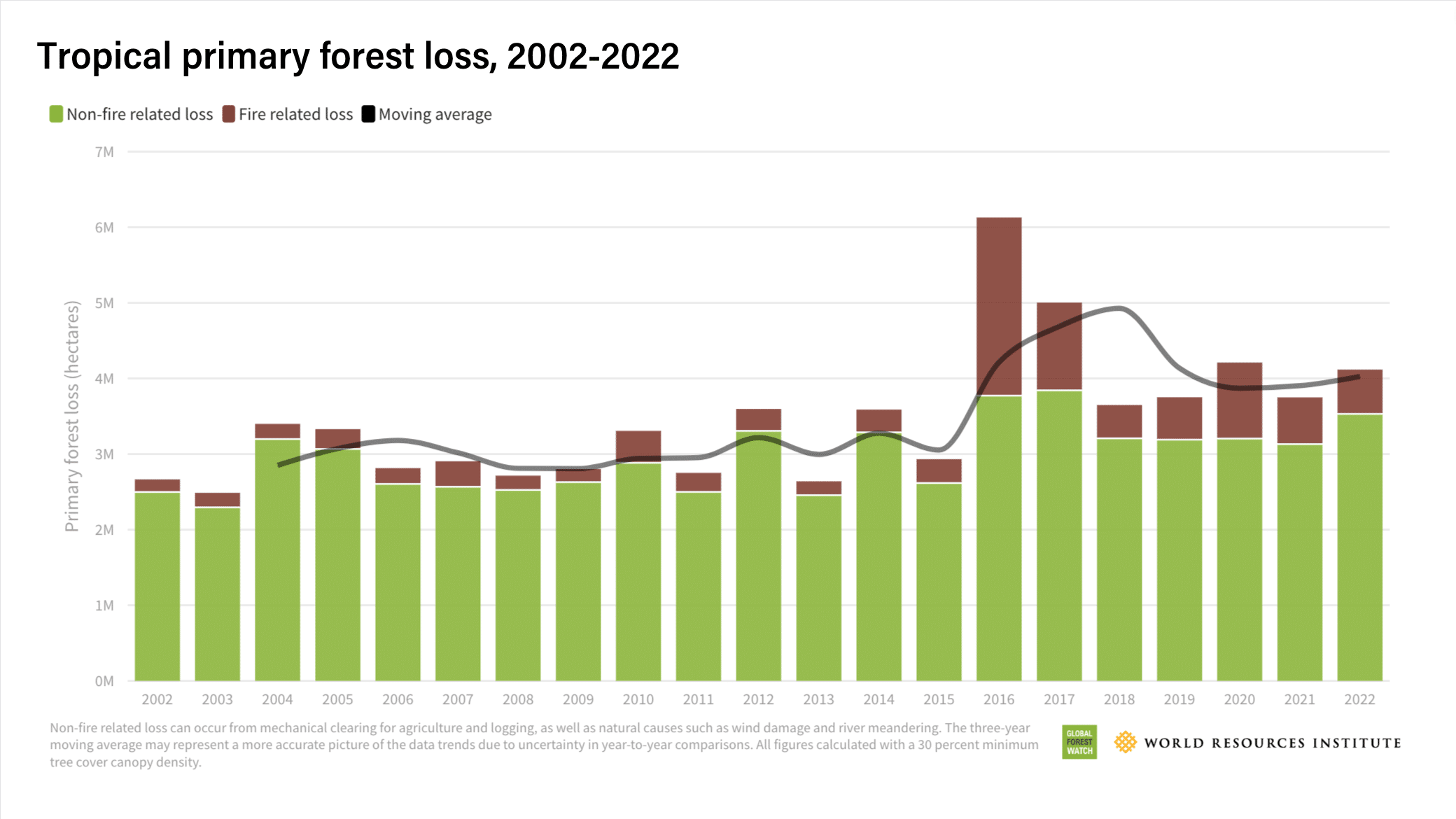The equivalent of 11 football fields of tropical primary forest was lost every minute last year.
—
Tropical deforestation soared 10% in 2022 compared to the previous year, with an estimated loss of 4.1 million hectares – the equivalent of losing 11 football fields of forest per minute, a new study has found.
The new data, compiled by the University of Maryland and published by the World Resources Institute’s (WRI) Global Watch, comes nearly two years after 145 world leaders representing 85% of the world’s forests pledged to halt and reverse deforestation by the end of the decade at COP26 in Glasgow. They also vowed to invest US$19.2 billion worth of private and public funds in projects aimed at halting forest loss and restoring the planet’s green lungs.
At last year’s UN climate summit, COP27, most signatories of the Glasgow Declaration on Forest and Land Use renewed their commitment by launching the Forest and Climate Leaders’ Partnership (FCLP), a voluntary partnership to accelerate momentum to halt and reverse deforestation and land degradation by 2030.
Data gathered last October by the Forest Declaration Assessment had already suggested that, despite slower forest destruction rates throughout 2021, the world is not on track to meet the Deforestation Pledge goal by 2030. This week’s findings confirm last year’s grim forecast.

Image: World Resources Institute.
Trees are known for their capacity to absorb carbon dioxide through photosynthesis. Healthy forests act as extremely valuable carbon sinks, with the Amazon rainforest being one of the world’s most important ones. However, deforestation is turning sinks into huge net emitters, effectively contributing to a steep rise in global temperature.
According to researchers behind the latest dataset, last year’s forest loss resulted in 2.7 gigatonnes of carbon dioxide emissions, the equivalent of India’s annual fossil fuel emissions.
Tropical deforestation took place primarily in Brazil, the Democratic Republic of Congo (DRC), and Bolivia. The former, home to the world’s largest rainforest, the Amazon, saw its highest rate of non-fire-related loss since 2005, up 15% from 2021. The record increase occurred during the last year of Jair Bolsonaro’s presidency.

Image: World Resources Institute.
From incentivising farmers to slash and burn the Amazon, to reversing environmental legislation and discarding land reserved for environmental tribes, deforestation in the Amazon – which is home to about three million species of plants and animals, as well as one million indigenous people – soared to a 15-year high with Bolsonaro.
According to a report, in the first year of his presidency alone, forest loss increased four-fold, rising from one million hectares in 2018 to 3.9 million by the end of 2019. For years, scientists have warned that the forest is nearing a tipping point beyond which there would be irreversible consequences that would be felt across the globe.
But the re-election of President Lula, who was sworn in on January 1, 2023, has brought new hope for the Amazon.
During his presidential campaign, Lula vowed to fight Amazon deforestation and crack down on illegal gold miners, loggers, and ranchers responsible for widespread environmental destruction and the displacement of indigenous communities. Only weeks into his mandate, he announced a crackdown on supplies to illegal miners in the Yanomami territory in the hope to break a network of gold laundering. The Guiana Shield, one of the most affected areas with gold mining activities, accounts for as much as 90% of total deforestation in the country.
You might also like: How Does Deforestation Affect the Environment?


















